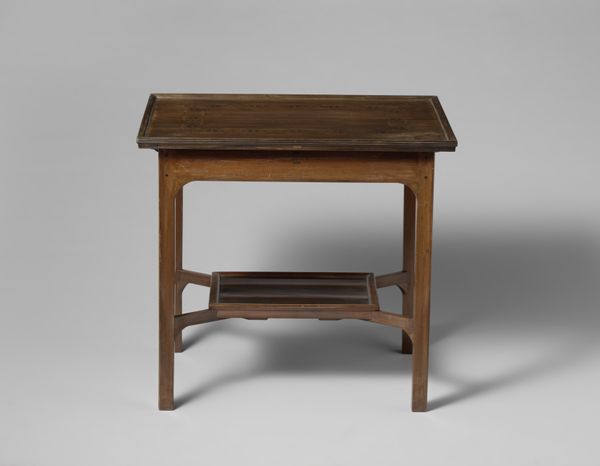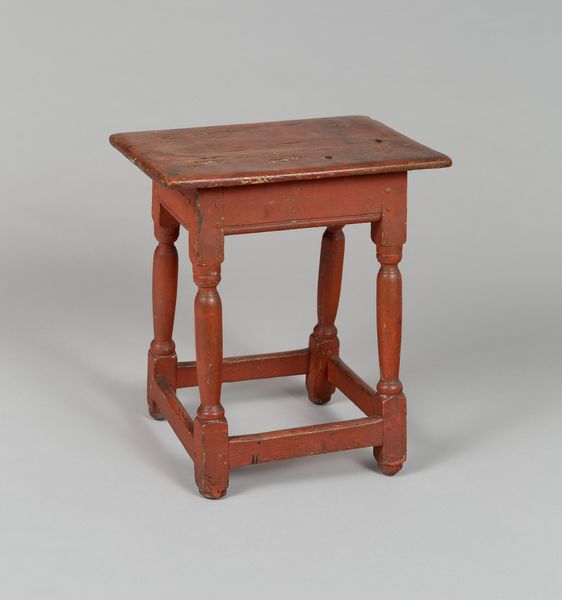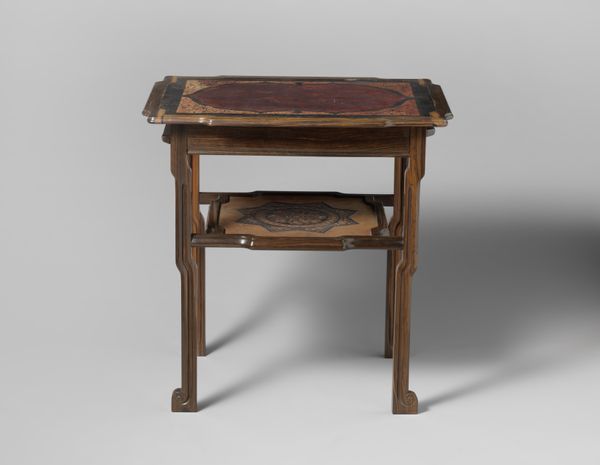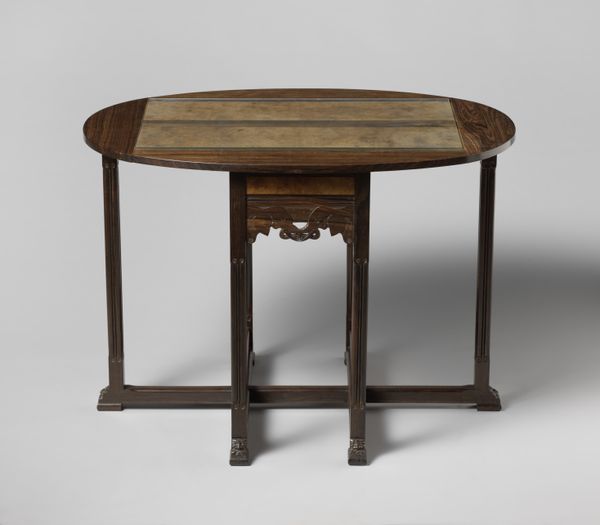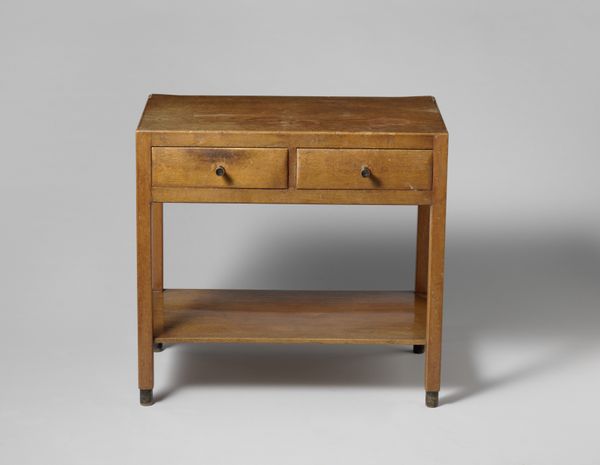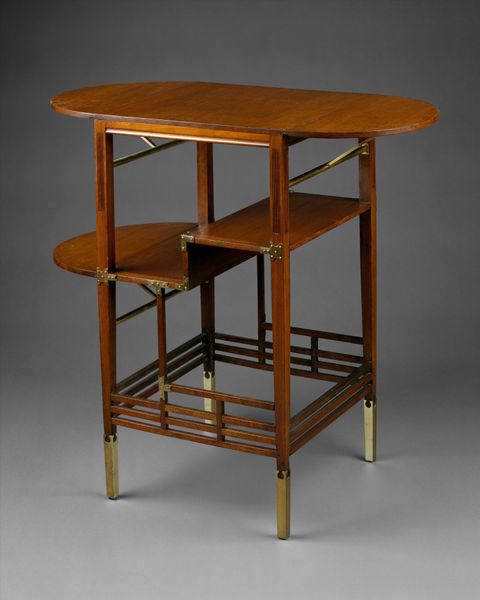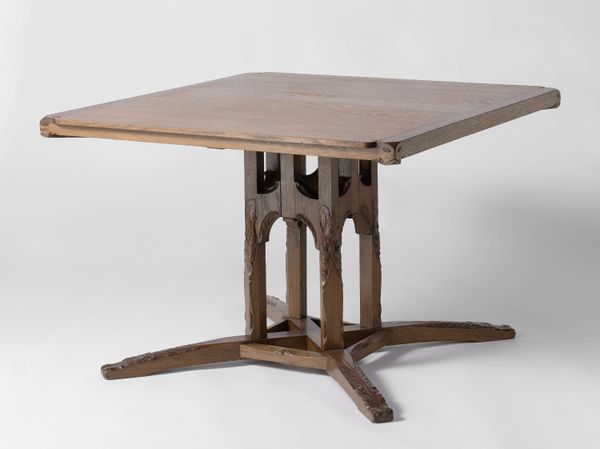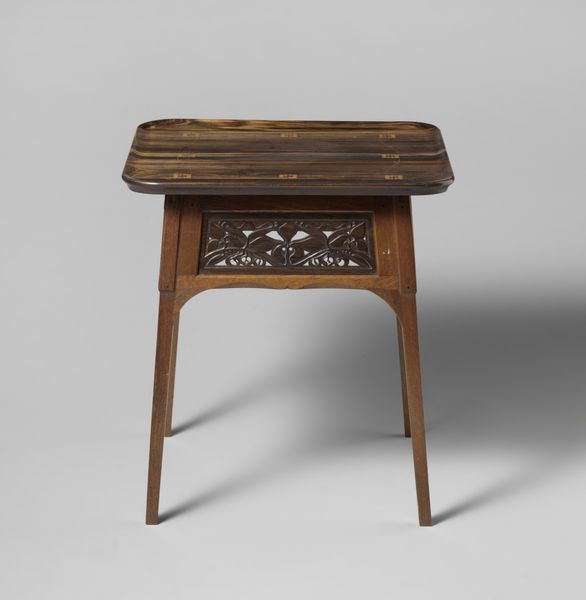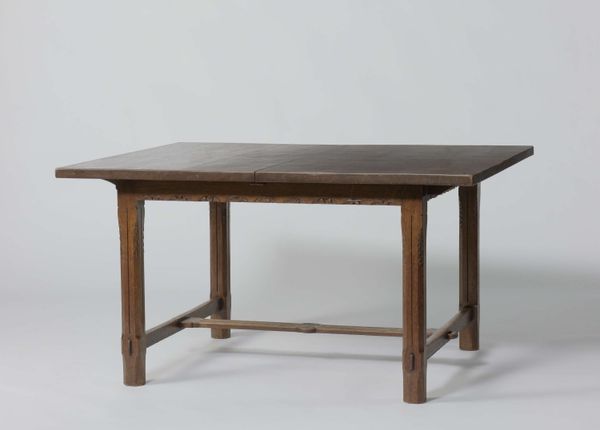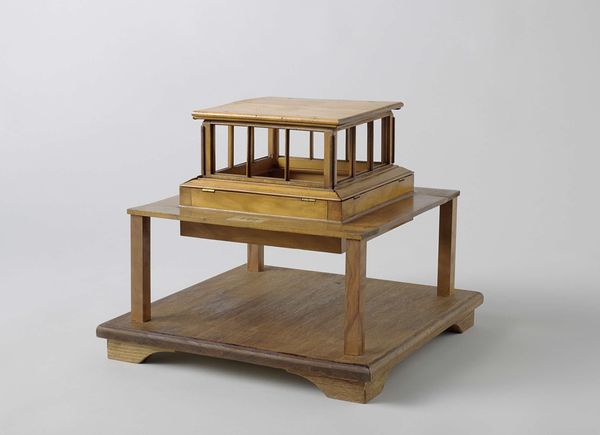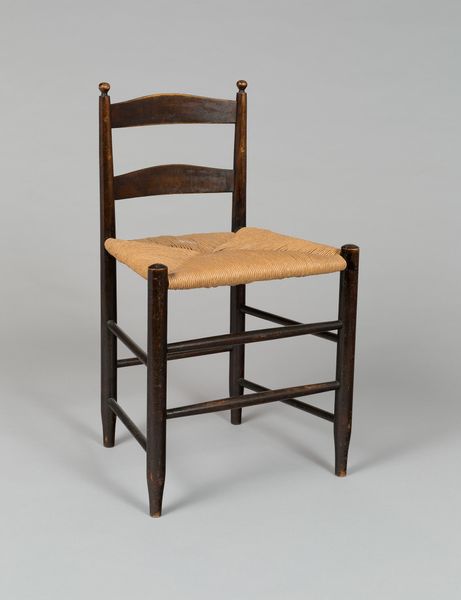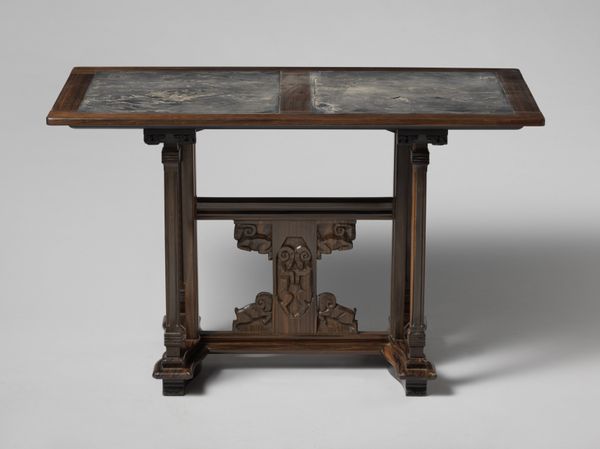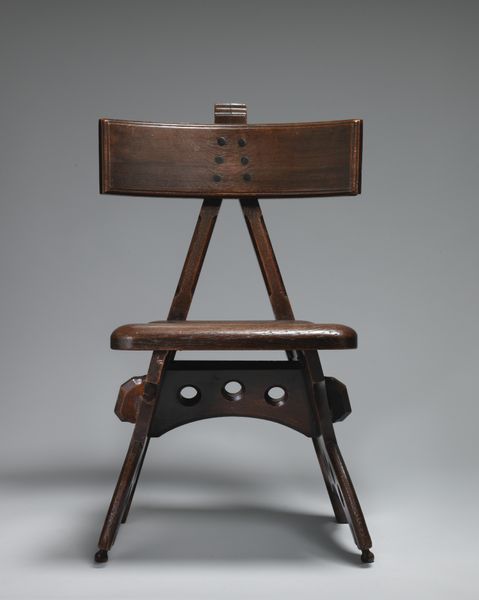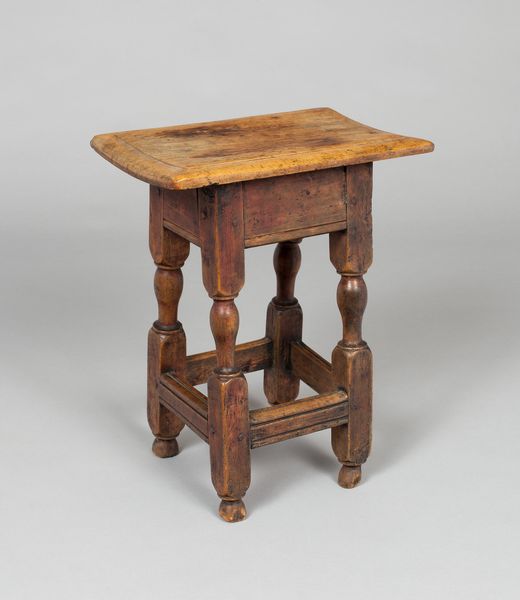
Theetafel met een uitneembaar dienblad en opengewerkte zijwanden in een bonenmotief c. 1910
0:00
0:00
theonieuwenhuis
Rijksmuseum
wood
#
arts-&-crafts-movement
#
furniture
#
wood
Dimensions: height 79.5 cm, width 74.3 cm, depth 52.5 , weight 11 kg
Copyright: Rijks Museum: Open Domain
Curator: This elegant tea table, crafted around 1910 by Theo Nieuwenhuis, invites a closer look at the Dutch Arts and Crafts movement. You can find it here at the Rijksmuseum. Editor: Immediately, I notice its quiet sophistication. The wood grain is so prominent, and that openwork detailing along the sides gives it such an airy feel. Almost like a restrained exuberance, wouldn't you agree? Curator: Absolutely. Nieuwenhuis and his contemporaries aimed to elevate craftsmanship. This table speaks volumes about the values inherent to that period. By placing handmade quality at a premium, it served to promote that ethos within the art world. Editor: Look at how the removable tray fits perfectly onto the stand; you can also see such clear evidence of joinery. It speaks to a level of skill often lost when furniture becomes mass-produced. Was Nieuwenhuis involved with a specific workshop? Curator: Yes, he was prominently associated with 't Binnenhuis, a design firm in Amsterdam. 't Binnenhuis sought to democratize design by offering well-crafted furniture to a broader audience, attempting to bridge the gap between art and everyday life. They even advocated against the traditional divide between different decorative arts like woodwork, metalwork and glass, for example. Editor: That makes perfect sense. This isn't just furniture; it's a statement about valuing labor and materials. The 'bonenmotief,' as it’s described—the bean motif—further suggests a connection to the earth, a subtle nod to organic forms within the rigidity of its geometry. Curator: Exactly. The Arts and Crafts movement often looked to nature for inspiration as a way of escaping the sometimes brutal industrialization in Western Europe. Furthermore, furniture pieces such as these occupied important roles as symbolic items. Consider the bourgeois family sharing tea, and the various signifiers that communicate throughout this small gesture. Editor: The very act of gathering for tea itself is elevated, then, becoming a miniature stage for social rituals centered around an object made with such careful attention to process. To consume using such beautiful items, or have those items visible within your private salon or living room—that is what sets you apart and expresses certain social positions. Thank you! Curator: Thank you, hopefully the next time people stop and admire this table, it becomes apparent how significant an object it truly is!
Comments
No comments
Be the first to comment and join the conversation on the ultimate creative platform.
